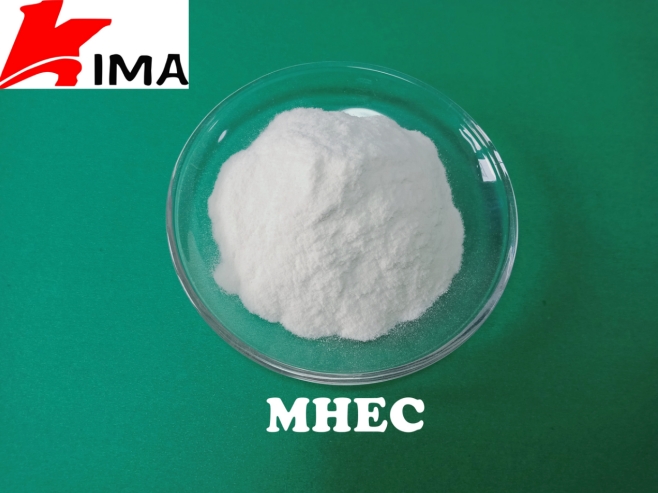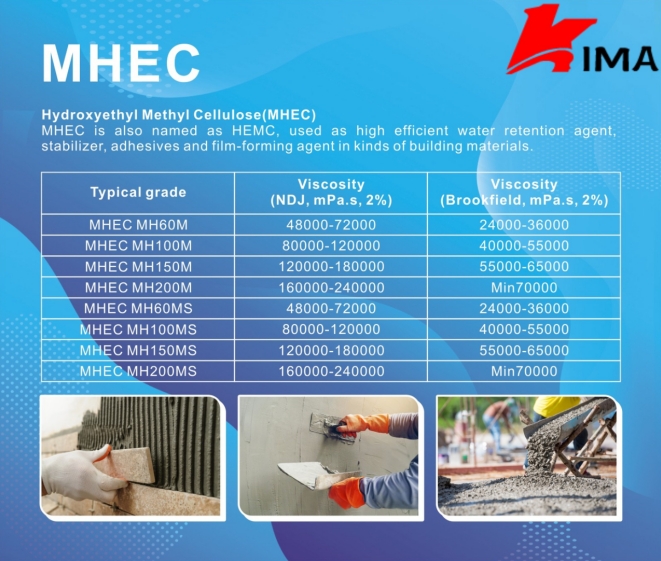Methyl hydroxyethyl cellulose (MHEC) is widely used as a water retaining agent in the fields of construction, coatings and daily chemicals. The mechanism of its water retaining effect is mainly related to its chemical structure, solubility characteristics and the viscous solution it forms in water.

1. Ability of chemical structure to bind with water
MHEC belongs to the cellulose ether compound, and its structure consists of methyl and hydroxyethyl groups grafted on the cellulose molecular chain. The cellulose molecular skeleton contains a large number of hydroxyl groups (–OH), and the introduction of methyl and hydroxyethyl groups not only increases the hydrophobic and hydrophilic balance of the molecule, but also enhances the hydrogen bonding between cellulose molecules and water molecules. When MHEC cellulose comes into contact with water, the hydroxyl and hydroxyethyl groups interact with water molecules through hydrogen bonds, allowing water molecules to effectively bind around MHEC molecules, thereby playing a role in water retention.
2. Solubility characteristics and water retention performance
MHEC has good solubility in cold water and can form a viscous solution. Its dissolution process includes the penetration of water molecules and the expansion of cellulose molecules. After MHEC is dissolved in water, its molecular chains stretch and expand under hydration, thereby increasing the viscosity of the solution. As the concentration increases, the MHEC solution gradually forms a mesh structure that can capture more water molecules in the water and form a uniform and stable hydration network. This can effectively delay the volatilization and loss of water, giving MHEC a good water retention capacity.
3. The role of forming a gel network
At higher concentrations, the MHEC solution will form a gel-like network structure. This network structure locks water through physical cross-linking and molecular chain entanglement, thereby reducing the migration speed of water molecules. The hydrogen bonding effect and van der Waals force between MHEC molecules work together to confine water molecules in the molecular gaps and make them difficult to escape. In building materials, this network structure can slow down the evaporation rate of water, keep the materials moist, extend the construction operation time, and prevent cracking caused by early dehydration.
4. The effect of temperature on water retention
The water retention effect of MHEC is also affected by temperature. Generally, the water retention capacity of MHEC is more significant at low temperatures, because the evaporation rate of water is slower under low temperature conditions, and MHEC molecules can retain water more effectively. However, as the temperature rises, the mobility of the MHEC molecular chain increases, and the volatilization rate of water also accelerates. Within a certain temperature range (usually 60-80°C), MHEC exhibits thermal gelation properties, that is, its solution forms an insoluble gel-like structure after heating, which blocks the water and further enhances the water retention capacity. This feature makes MHEC also have a good water retention effect in high temperature environments, especially suitable for some building applications that require high temperature resistance.
5. Relationship between viscosity and water retention
The viscosity of MHEC solution is an important indicator of its water retention effect. Generally, the higher the viscosity of MHEC, the stronger the water retention capacity of its solution. Higher viscosity can effectively reduce the penetration and flow of water, thereby prolonging the retention time of water. Adding high-viscosity MHEC to building materials or coatings can form a thicker hydration layer, so that the water is better locked and prevented from rapid loss. This is also one of the important reasons why MHEC is widely used in building mortar and putty powder.
6. Application of MHEC in water retention in different materials
Application in building mortar
MHEC as a water retaining agent in building mortar can significantly improve the workability and adhesion of mortar, prevent water from evaporating too quickly before the mortar is cured, and reduce cracking and shrinkage caused by dehydration. The network structure of MHEC can lock the moisture in the mortar, provide sufficient water source for cement hydration, and ensure the strength and durability of the mortar.
Application in putty powder
Putty powder is a material used to level the wall during construction. Water retention is crucial to the construction quality of putty powder. The role of MHEC in putty powder is to maintain a moist state, avoid rapid evaporation of water, and allow the putty to have enough time to solidify after application. MHEC can also improve the anti-sagging property of putty powder and ensure a smooth and beautiful construction effect.

Application in coatings
MHEC plays a role in water retention and thickening in coatings, so that the coating maintains a certain degree of wetness during construction, effectively preventing unevenness caused by too fast drying of the coating. At the same time, the viscosity of MHEC solution helps to improve the adhesion of the coating and enhance the weather resistance of the coating.
The mechanism of action of MHEC as a water-retaining agent mainly relies on its unique chemical structure, hydrogen bonding with water molecules, and the viscous solution and gel network formed in water. By enhancing the moisture retention of materials, MHEC can effectively extend the working time of construction materials and improve the workability and stability of materials. Therefore, MHEC plays an irreplaceable role in the fields of construction, coatings and daily chemicals, and shows excellent water retention effects under different temperature, viscosity and concentration conditions.
 English
English 日本語
日本語 français
français Deutsch
Deutsch Español
Español italiano
italiano русский
русский português
português العربية
العربية Türkçe
Türkçe Nederland
Nederland





